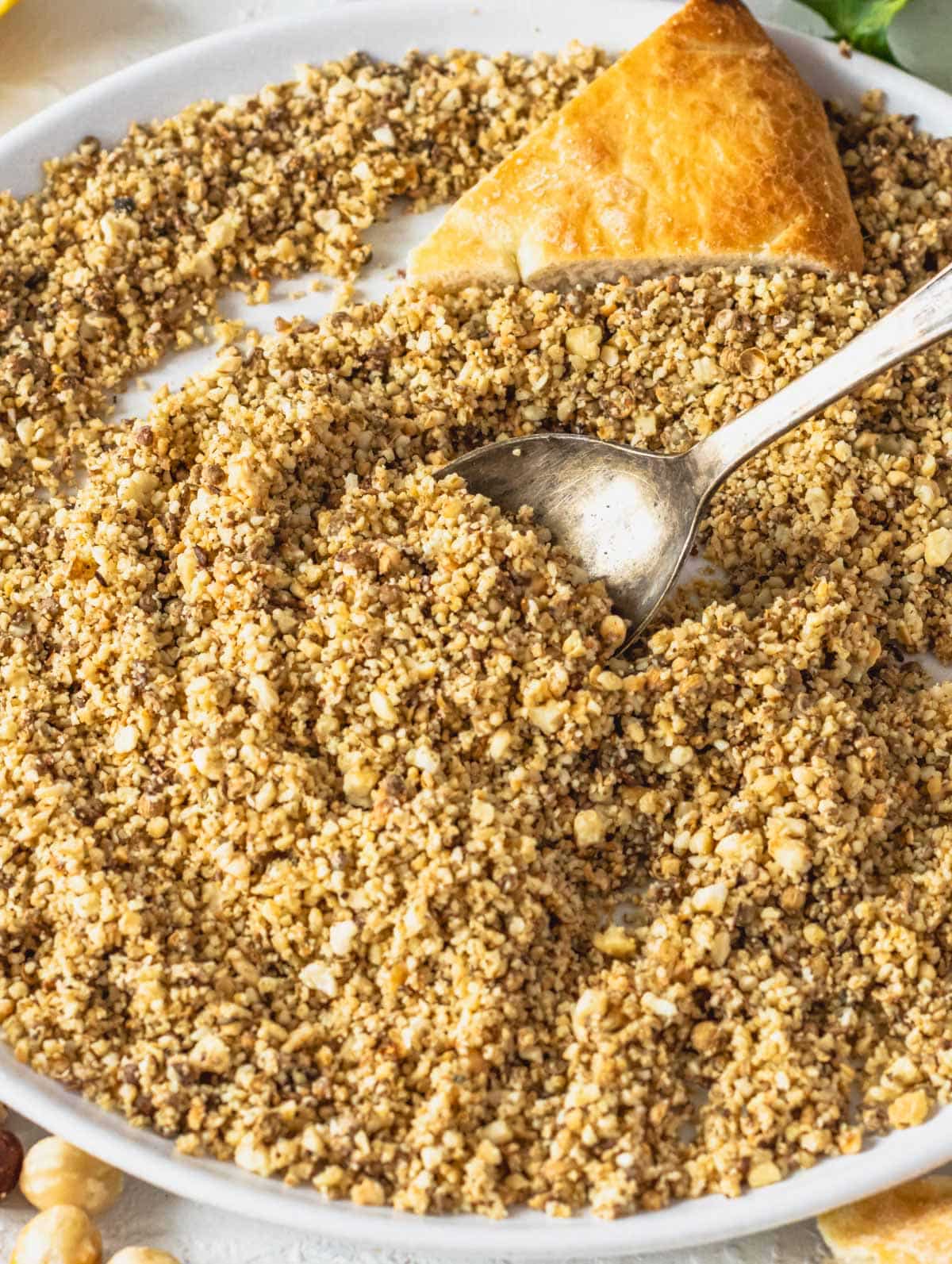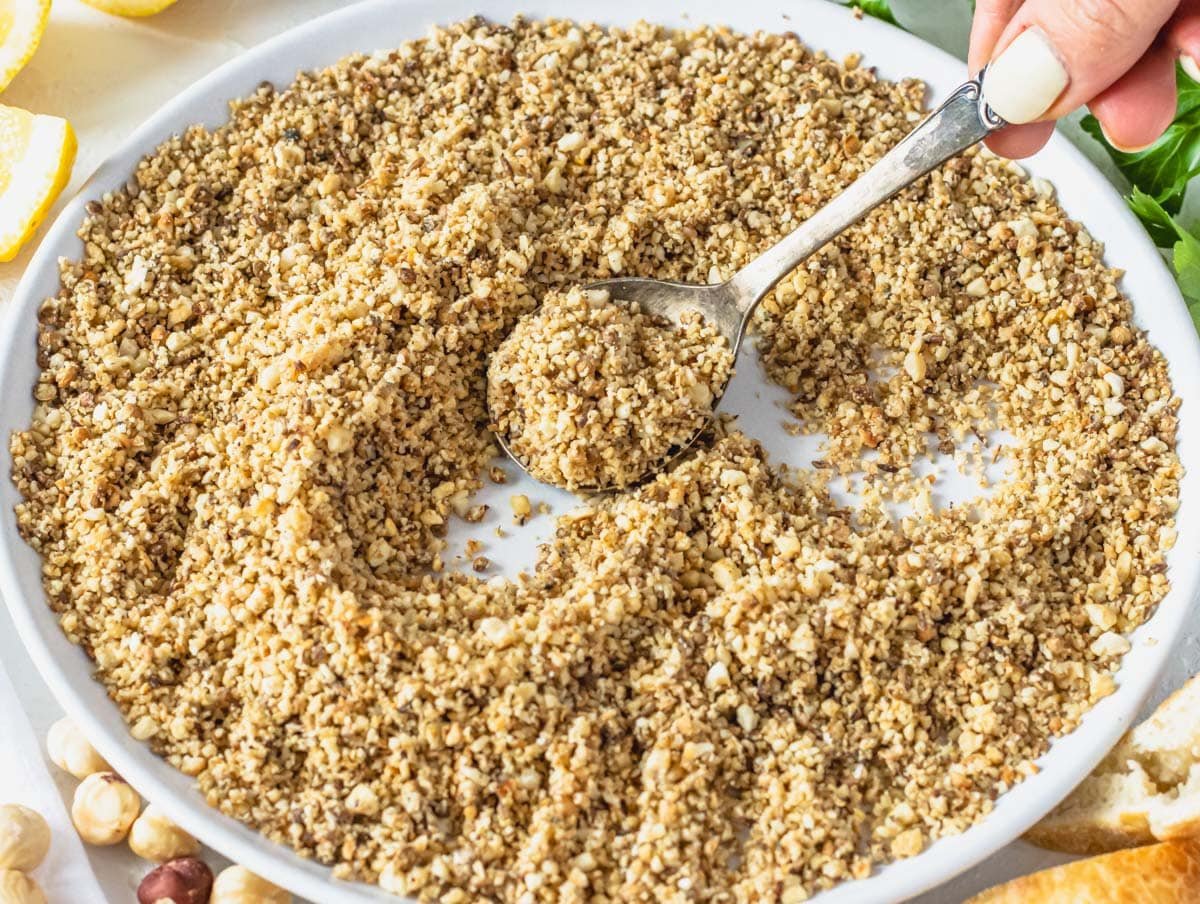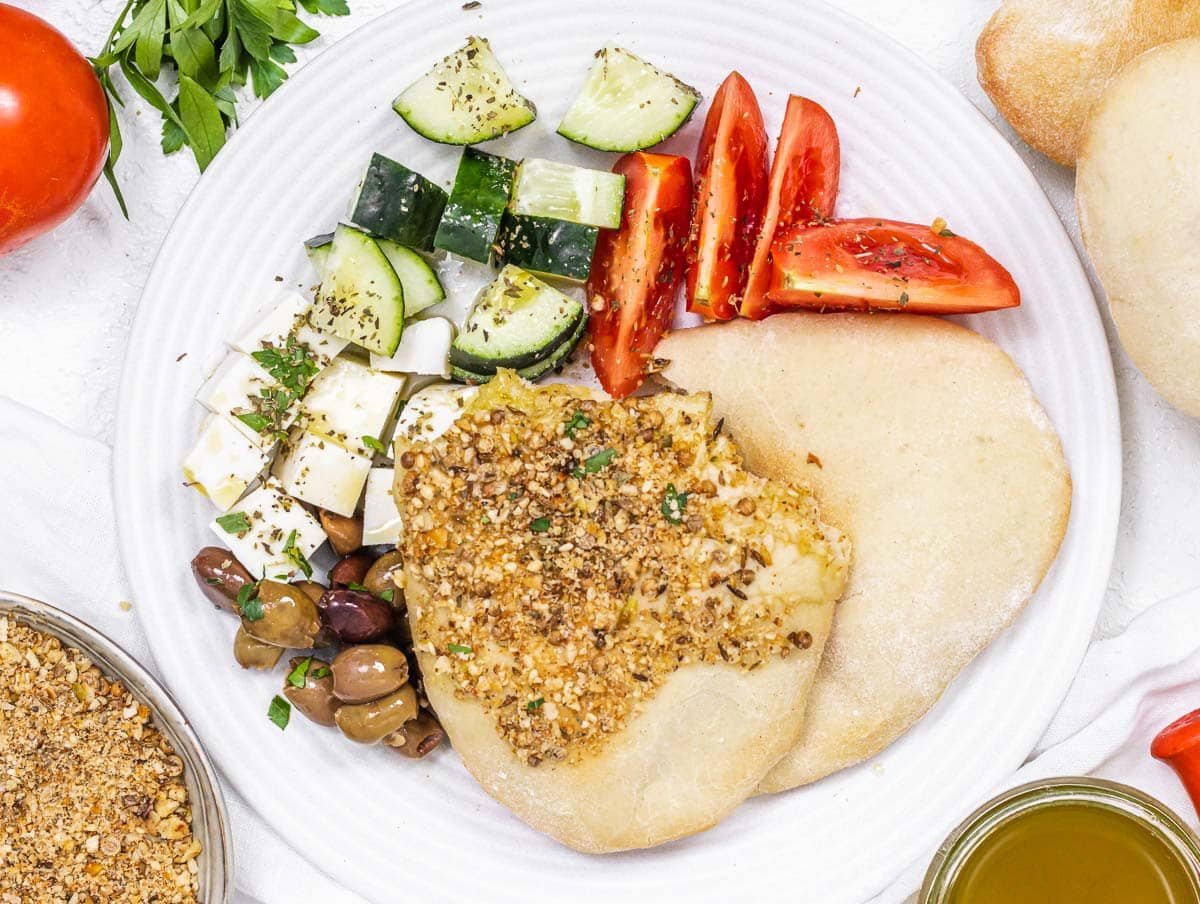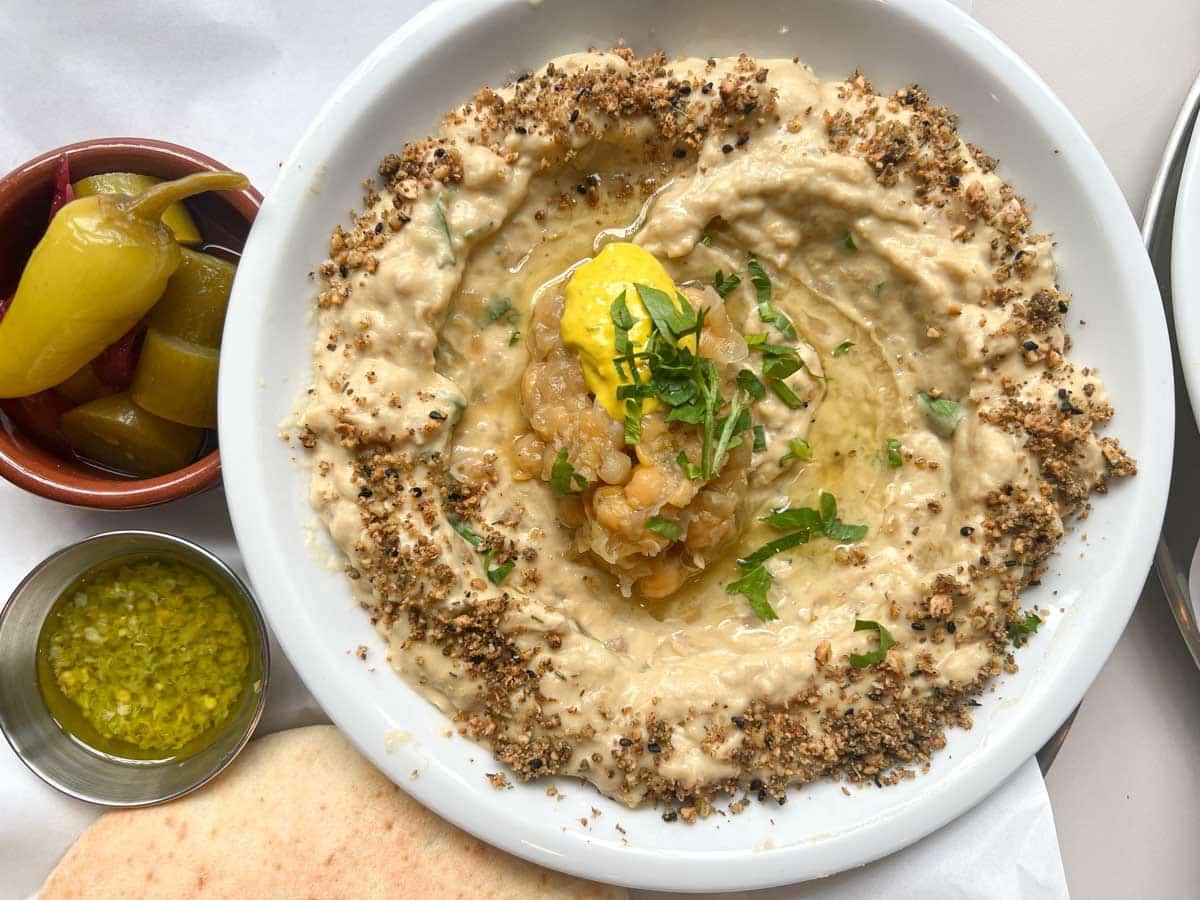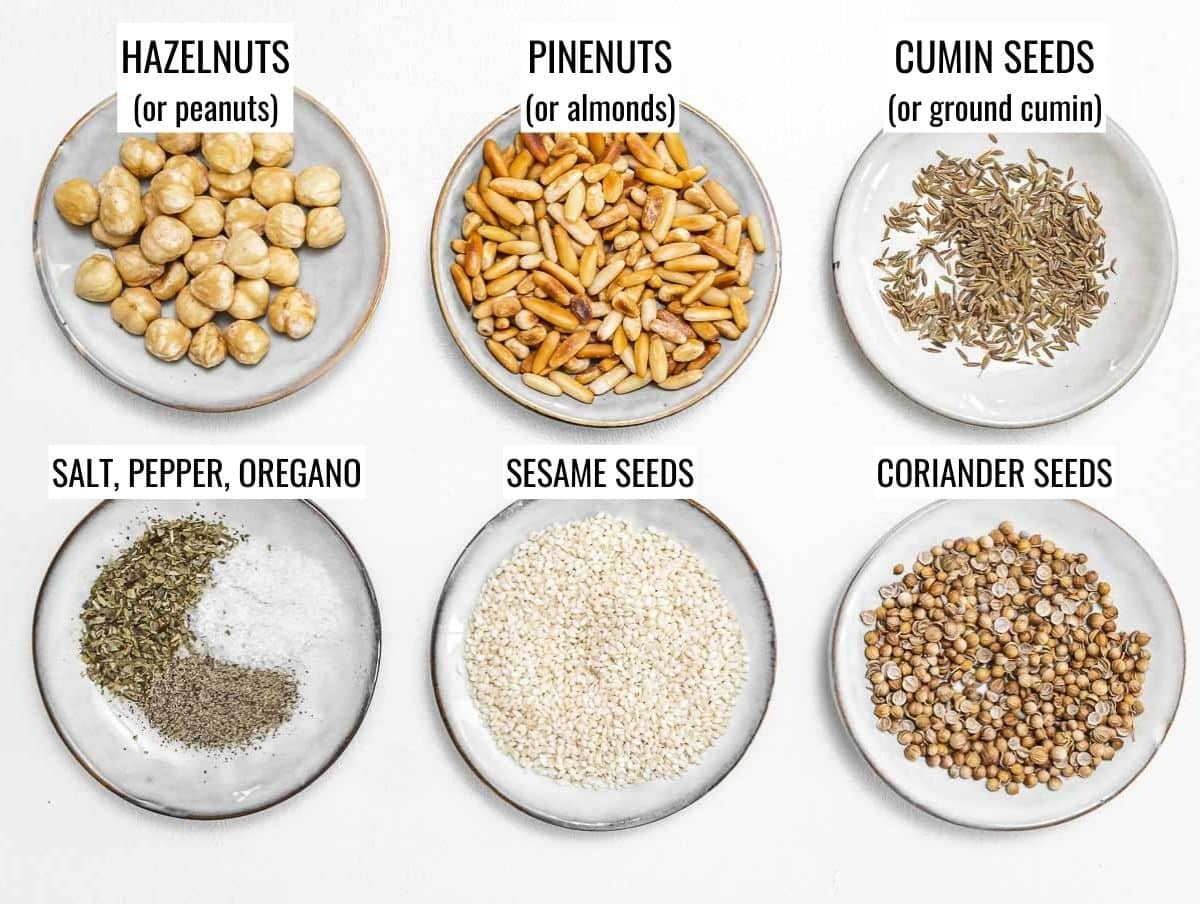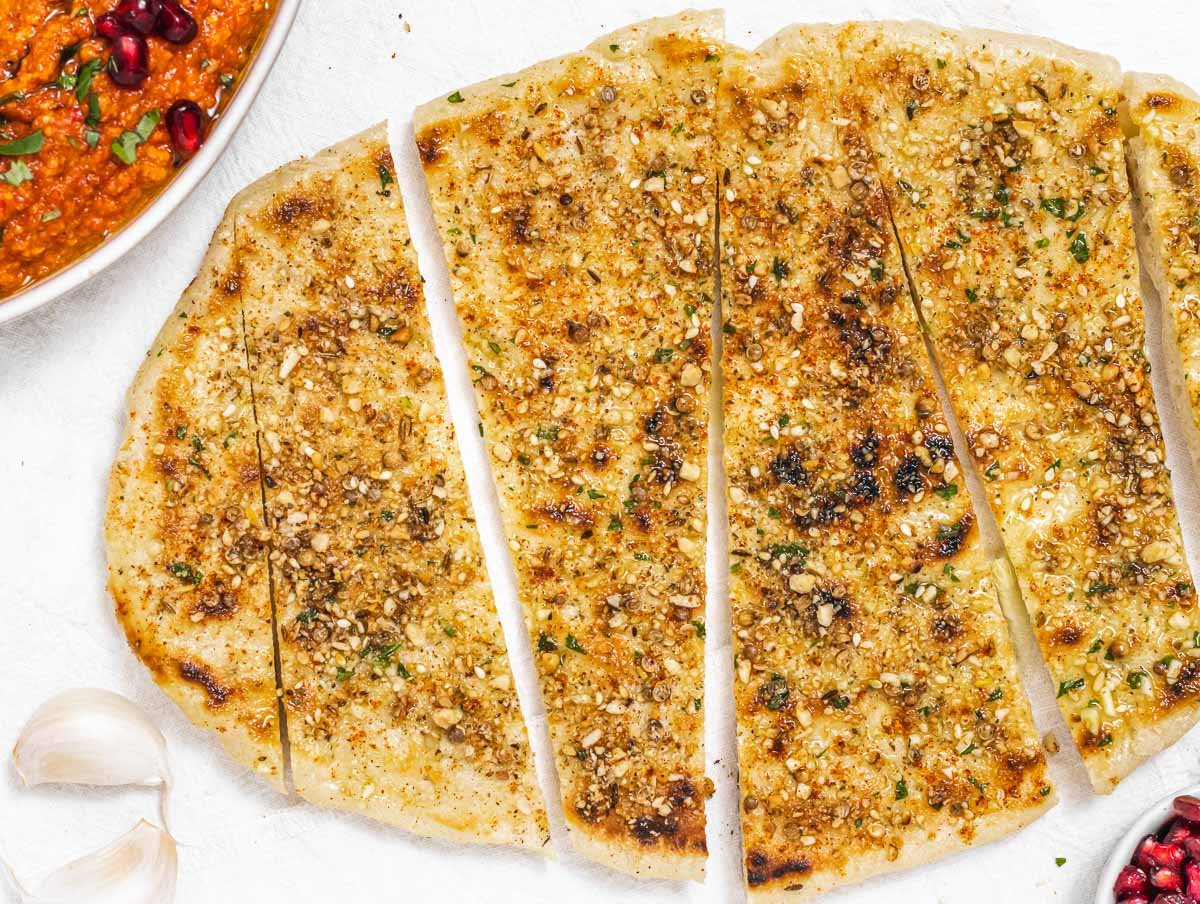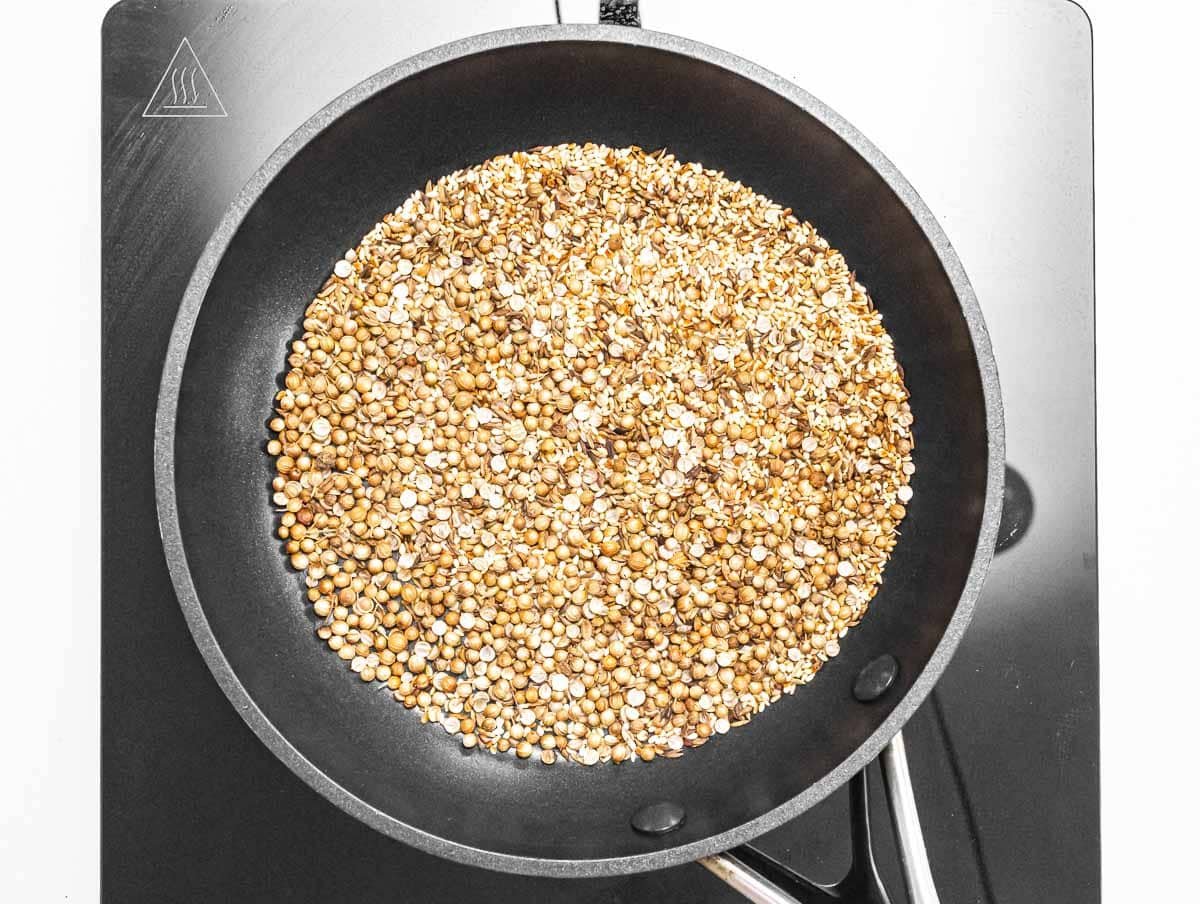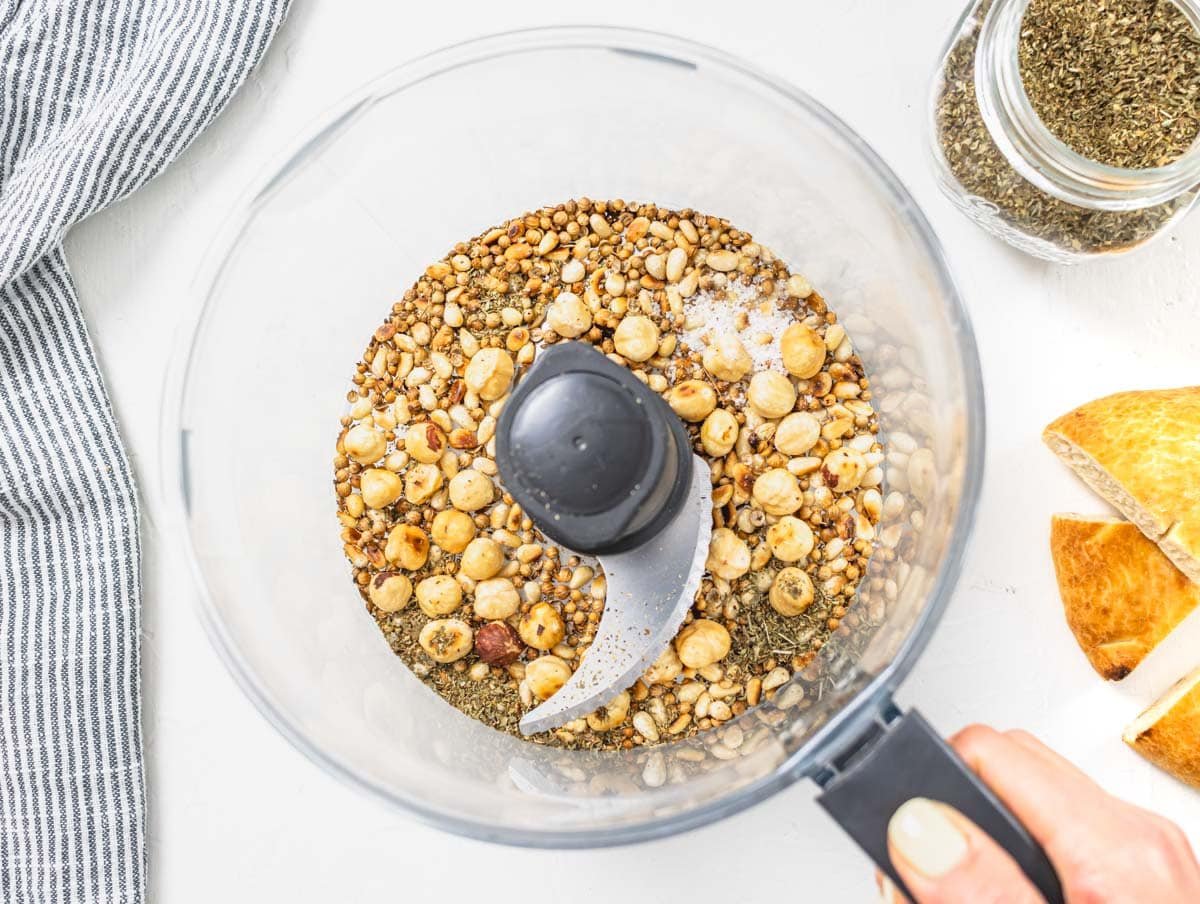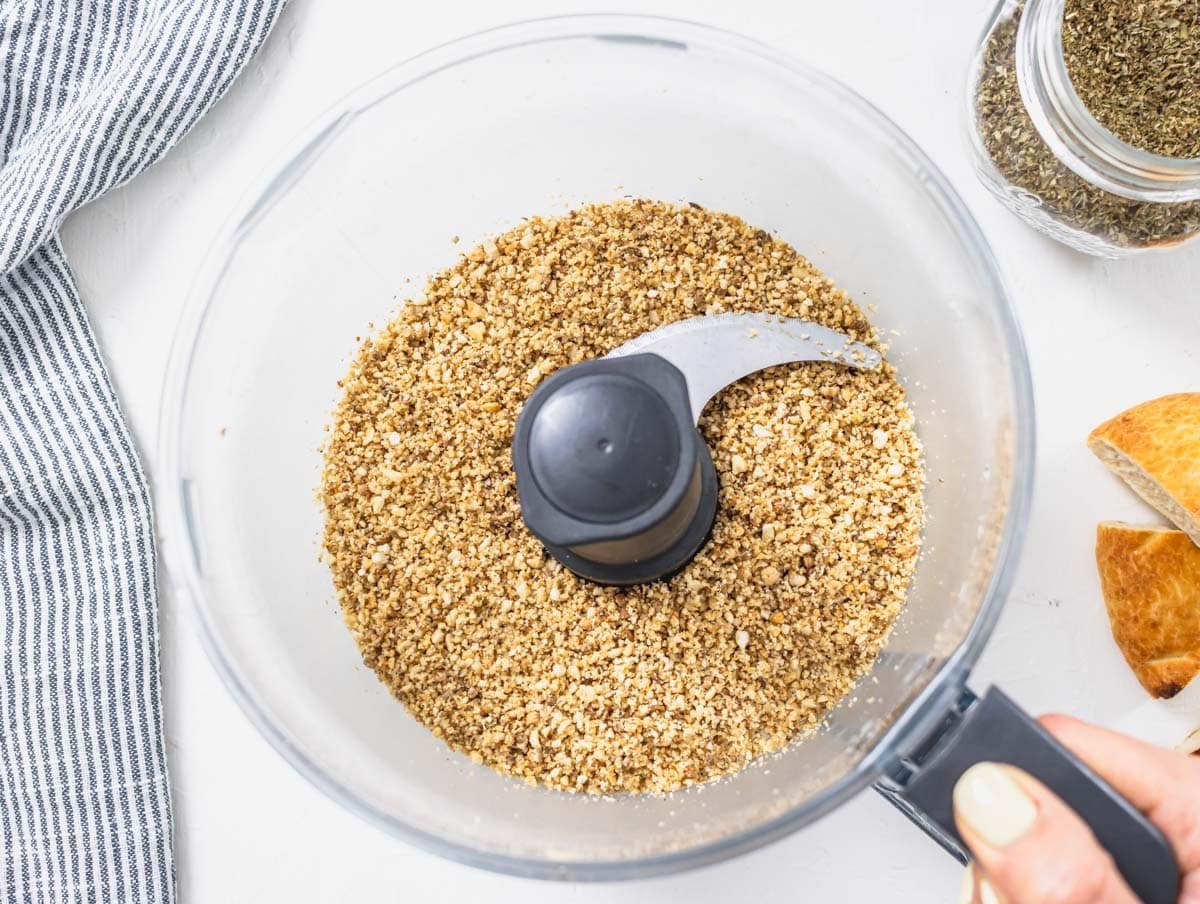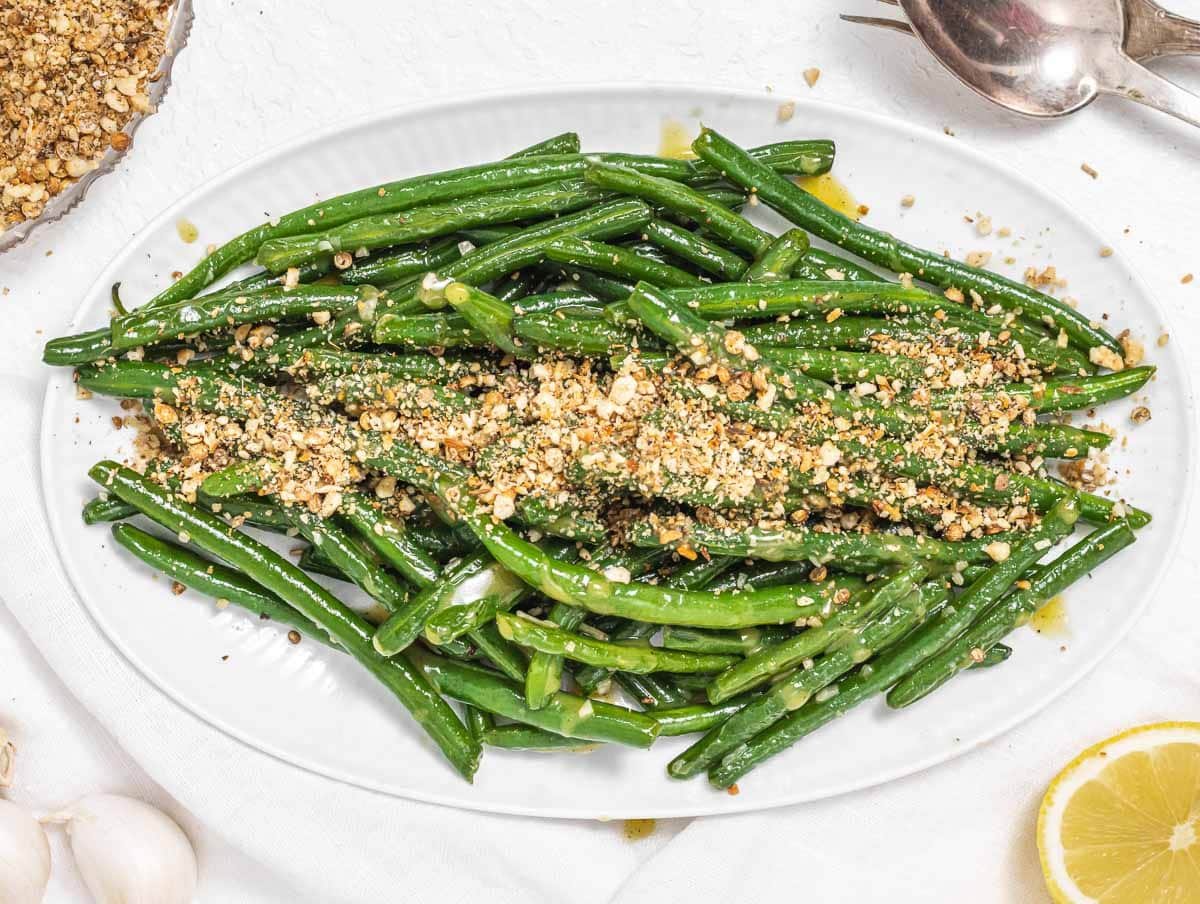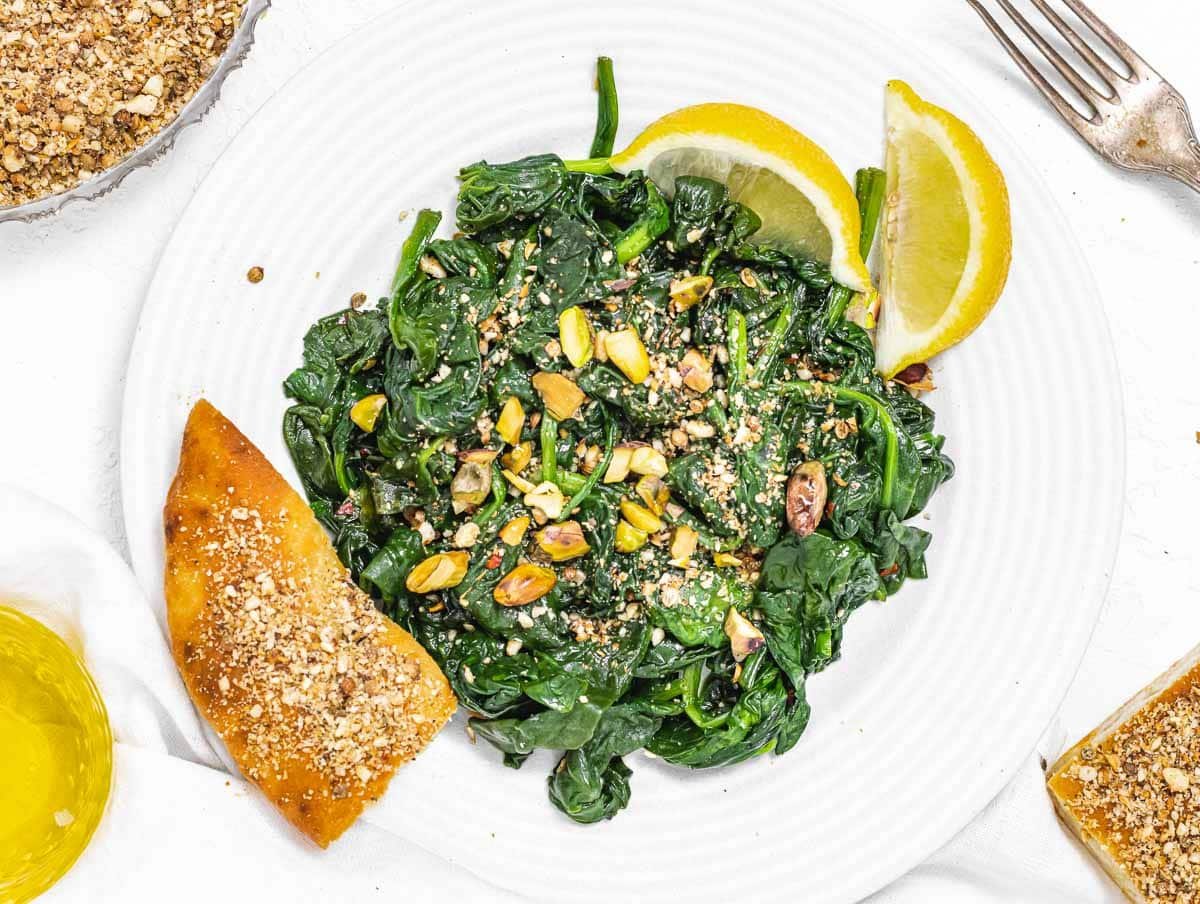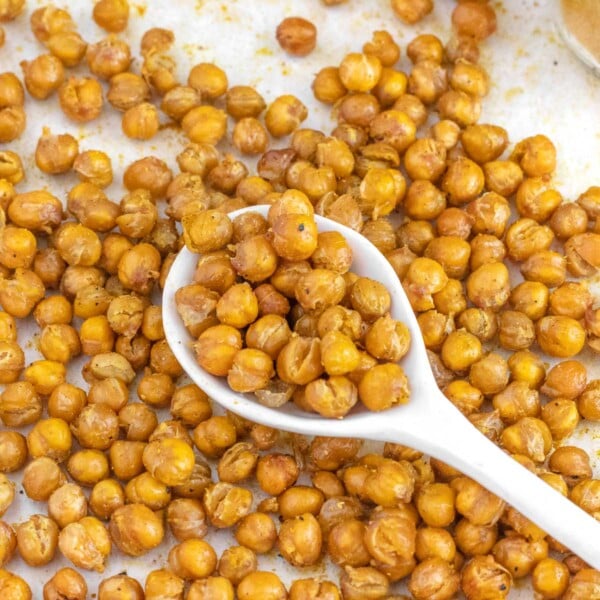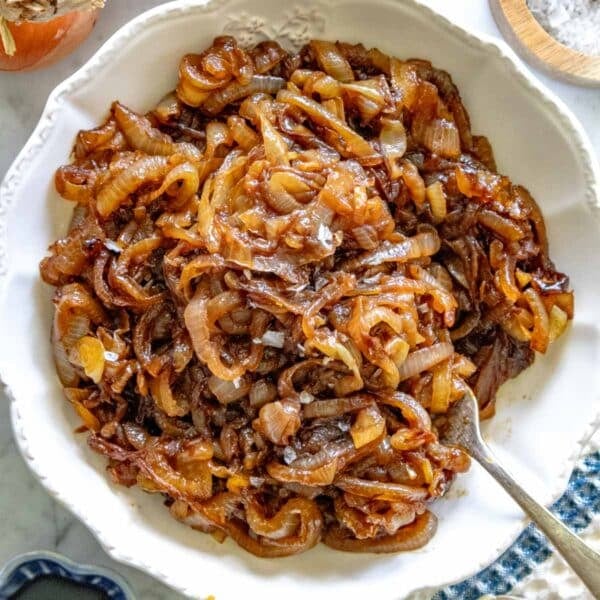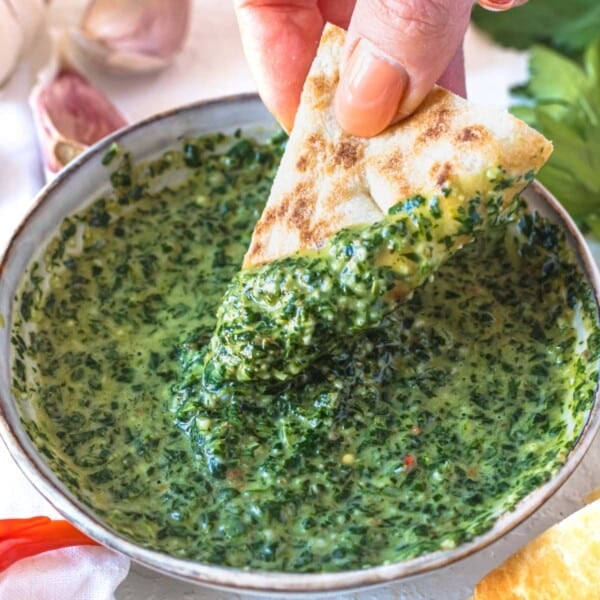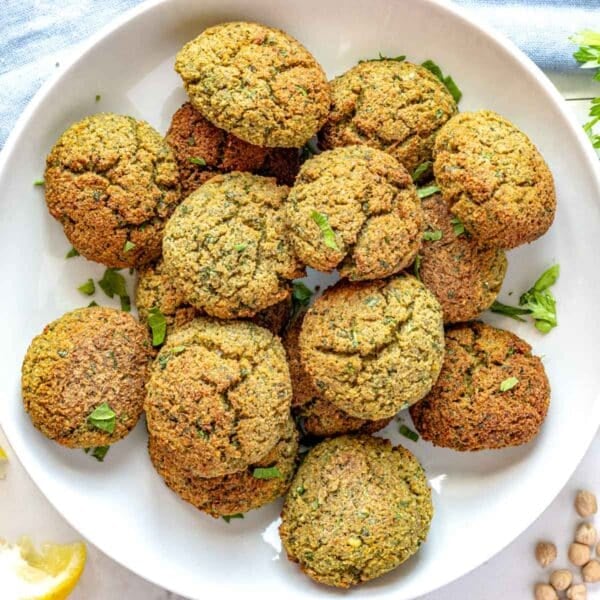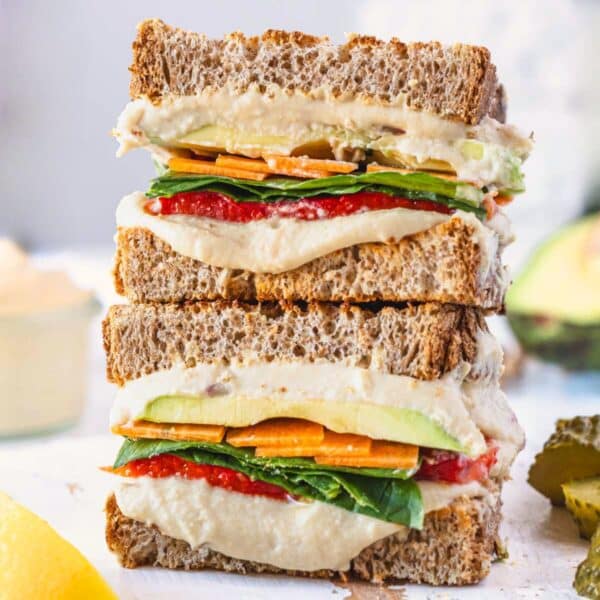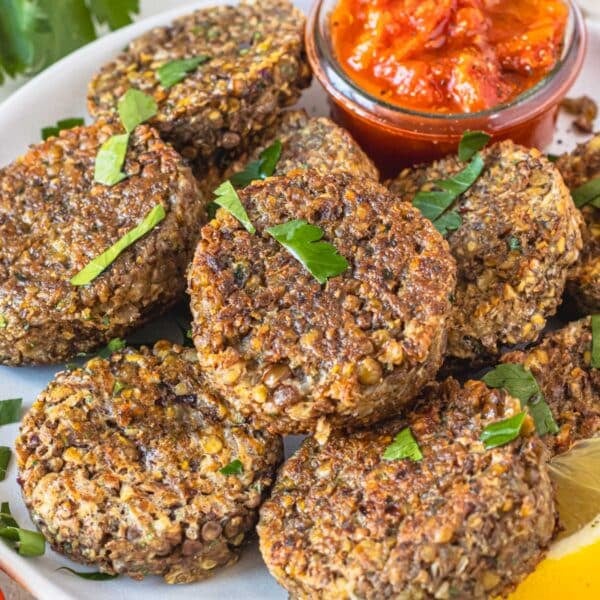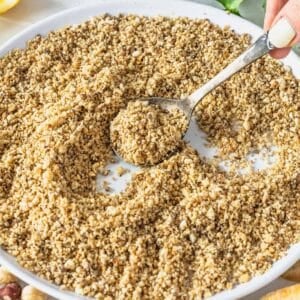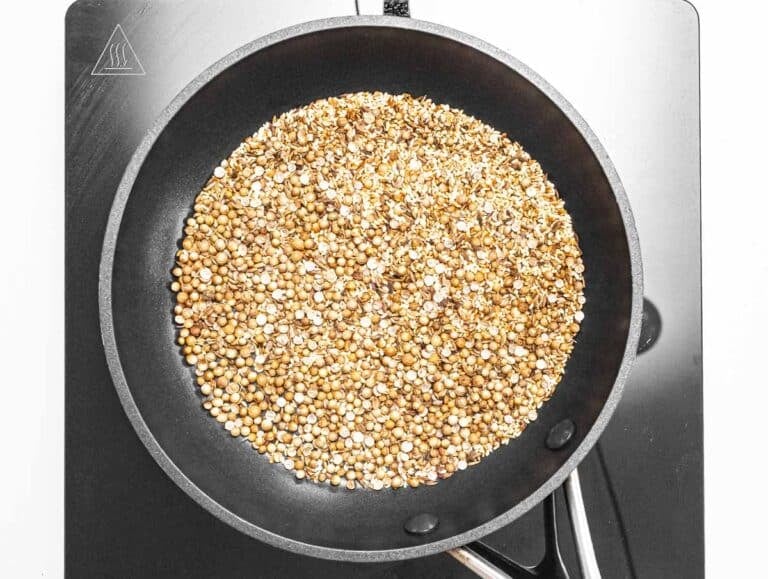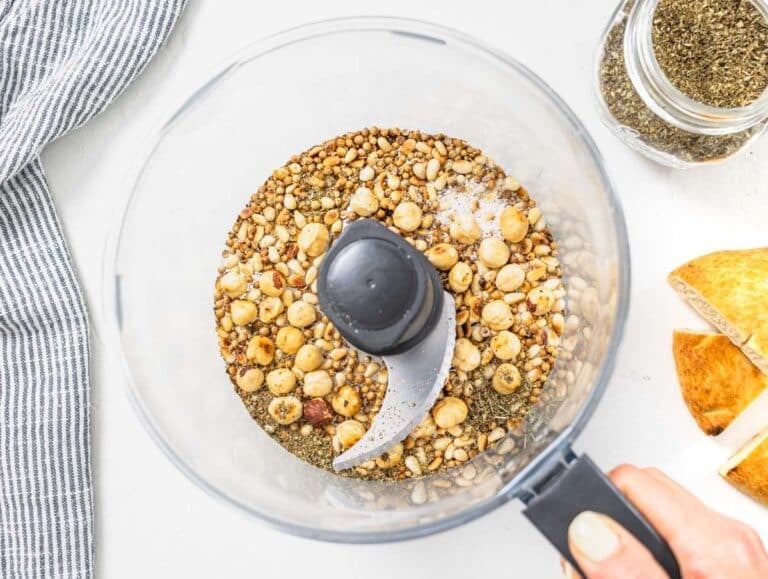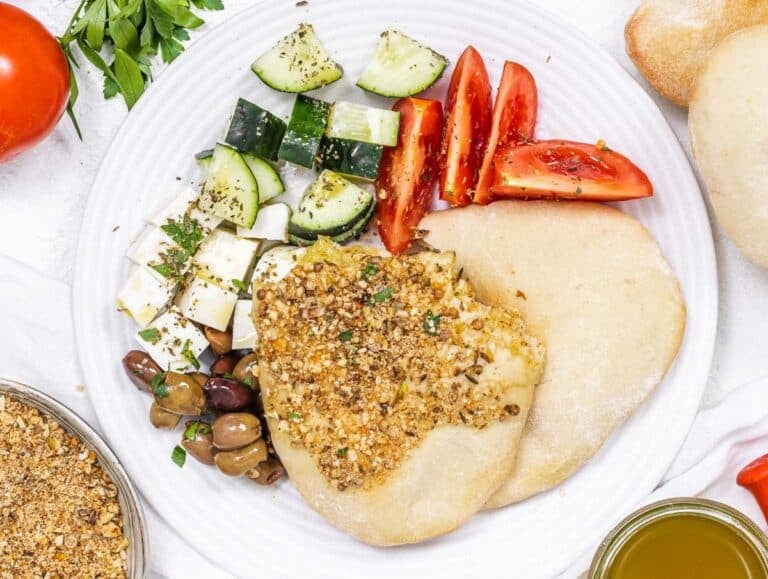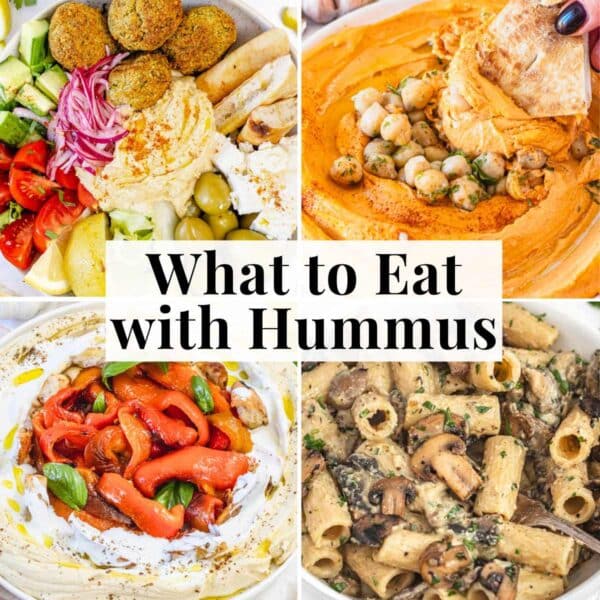It’s easy to make and keeps well for weeks. It’s excellent sprinkled on most of our Eastern Mediterranean and Middle Eastern recipes. This dukkah recipe combines Mediterranean tastes and crunchy textures into a beautiful blend of exotic flavors that will bring excitement to your dinner table. Dietary Note: this recipe is suitable for a vegetarian, vegan, and gluten-free diet.Don’t have time to read the full blog post? JUMP TO RECIPE HERE!
What is Dukkah?
Ingredients and Substitutions for Dukkah
How to make Dukkah
Serving suggestions
Variations
Dukkah with pistachio nuts
Questions
Make Ahead & Storage
More Topping Ideas
More Mediterranean recipes
It’s a delicious Egyptian spice blend where nuts and spices are toasted, then pounded with mortar and pestle (we use a food processor), neither too fine nor too coarse. Traditionally, Dukkah is eaten as a dip with pita bread drenched in olive oil. It’s also sprinkled on veggies, spreads, fish, and meat dishes. Dukkah is now making its way to the US and Europe thanks to the many chefs hailing from Eastern Mediterranean regions. We last had it in Israeli-Lebanese Balabait Eatery & Deli in Berlin, and it was love at first bite! The chef sprinkled it on top of Msabbaha or Masabacha, a dish of cooked chickpeas swimming in hummus, olive oil, spices, garlic, and lemon juice. Needless to say. It was delicious! You’ll love this dukkah recipe because you can use it to add beautiful aromas and crunch to most dishes. Think of it as the Eastern Mediterranean version of everything bagel seasoning. Also, this Egyptian spice blend is easy to make; it only takes about 10 minutes and keeps well for weeks. As usual, take our recipe as a guideline for inspiration and customize it based on your taste and what you have in your pantry. Feel free to change the nuts and the spices and develop your family-approved dukkah recipe.
Nuts
Use one or two nuts of your choice. Hazelnuts, pinenuts, and pistachios are the most traditional. You can also use almonds, cashews, walnuts, macadamia, and pecan. Substitute nuts with sunflower, pumpkin, pepitas, or mixed seeds.
Cumin seeds
Substitute ground cumin if you don’t have the seeds.
Coriander seeds
Whole coriander seeds add a distinctive citrusy, tangy flavor to this duqqa recipe. Substitute ground coriander for coriander seeds. If you don’t like coriander, substitute fennel seeds for coriander seeds. In general, whole spices are more aromatic than ground spices.
Sesame seeds
You can use any sesame seeds. We happen to have white ones, but darker-colored seeds work equally well.
Oregano
Dried oregano adds a pleasant herby flavor, reminding us of za’atar, another popular Middle-Eastern condiment. Substitute dried thyme, mint, or basil for oregano. You can also add a teaspoon of sumac.
Salt and black pepper
We recommend using sea salt or kosher salt and freshly ground black pepper. Note: you’ll probably be able to find most ingredients at your local grocery store; however, if you don’t, you can always order them online. We usually get a large (and cheaper) order of each whole spice, which lasts several months. Tip: Toast the nuts and spices separately in a dry skillet. This is important as they have different toasting times. Toast the hazelnuts and pine nuts in a skillet on medium heat until they crackle and brown. Set aside to cool. Toast cumin, coriander, and sesame seeds in the same skillet for a few minutes until they crackle and start to brown. Set aside to cool. Add the toasted nuts and spices, dried oregano, salt, and black pepper to a food processor and pulse until coarsely blended. Dukkah should look like a coarse powder, not too chunky or fine. Pair it with chopped cucumber, ripe tomatoes, olives, and feta cheese, and you’ve got a simple and delicious meal. Sprinkle it on spreads, soups, stews, and salads, or have it as part of a mezze platter with other Mediterranean and Middle Eastern dishes. We recommend it sprinkled on:
Lentil hummus Creamy cauliflower soup Muhammara Eggplant dip Hummus Shirazi salad Tabbouleh Roasted eggplant Caramelized roasted carrots
Sautéed green beans Roasted butternut squash Whole roasted cauliflower Easy sautéed kale Moroccan carrot salad Lentil cauliflower salad Sweet potato lentil salad Tofu scramble on toast Avocado spread
Here, we serve it on top of sautéed spinach, but it works on top of most veggies or as a dip for flatbreads. It is one of our favorite ways of making and eating it. Room temperature: Store Dukkah in an airtight container (we use a sealed mason jar) at room temperature for about a month before it loses its fragrant texture and the flavors start to dwindle. Freezer: If you plan to store it for over a month, we recommend freezing it. Transfer it into a freezer-friendly bag and freeze it for six months. Thaw: thaw at room temperature in a dry corner of your kitchen.
Roasted Chickpeas
Caramelized Onions
Chermoula
Tomato Confit
Mujadara (Lentils and Rice)
Falafel
Hummus Sandwich
Lentil patties
What to eat with Hummus
45 Easy Vegetarian Dinner Recipes
30 High Protein Vegetarian Meals
30 High Protein Vegan Meals
